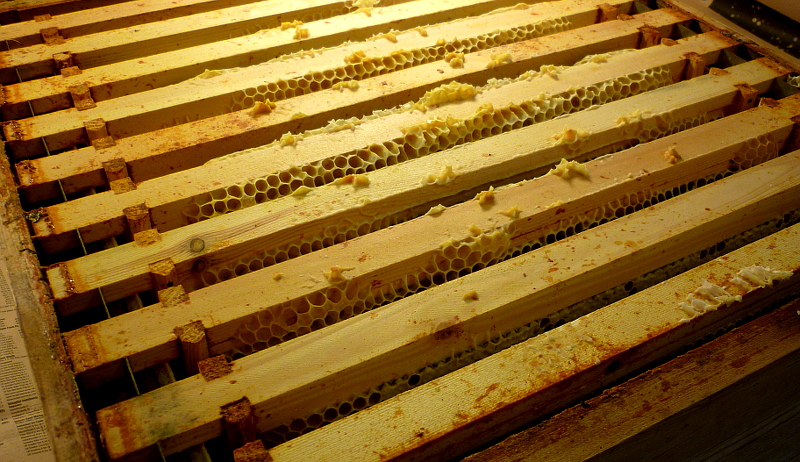
For every hobby, homesteading endeavor or project, there’s a glamorous side and, well, a less glamorous side. For beekeeping, the honey harvest is as sexy as it gets—the vision of glowing, golden jars of an expertly crafted natural sweetener is the pinnacle of the season’s work. The far less Instagram-worthy moments are those spent cleaning up the apiary and storage areas at the end of the harvest season. But those are exactly the tasks that get the beekeeper in working order for the next round of honey.
There’s no better time than the fall to clean and organize the equipment in which you’ve invested time, money, blood, sweat and possibly the pain of some stings. Now that your bees are bedded down for the coming winter, let’s look at what needs to be done behind the scenes.
1. Wash Your Bee Gear
Do this if the gear is soiled or smelly. You know that bees are notoriously fond of sweet smells, and equally appalled by foul ones. If your beekeeping suit, jacket, pants or gloves smell of honey, wax and possibly some smoke, there’s no need to launder the fabrics. Yet if the same equipment smells of human body odor, domestic animals or anything else less than floral, it’s time for cleaning: Wash it and store it properly for next year.
2. Clean Your Supers
Cleaning supers will prevent or reduce the spread of disease. The diseases and pests that afflict honeybees are, unfortunately, quite persistent and rather destructive. Any opportunity to limit their hold on your colonies is one you should take. Take good care of your honey supers and honey frames, especially this time of year when they’ll spend a number of months in storage. Freeze all honeycomb to eliminate the wax moth‘s foothold. Burn out old wooden supers if suspected diseases took your hives. Toss out the woodenware that is beyond repair or contained confirmed and contagious diseases, such as American and European foulbroods.
3. Wash Or Clean Your Equipment
Do this type of cleaning as often as needed. Scrape excess propolis off hive tools and frame rests if it becomes a hindrance to working effectively in the hives. Wash mason jar feeders, storage bins and plastic storage containers. Clean out feeders with warm soapy water before storing to remove any sticky honey or sugar syrup residue. Thoroughly wash and clean all honey harvesting equipment before storage.
4. Take Inventory Of Supplies & Medications
Whether you regularly treat your bees with conventional medications or use holistic and natural remedies to combat pests and disease, now is a wonderful time to take stock of what you have left and top off supplies.
5. Clean Storage Areas
Do this by sweeping and dusting, wiping up old honey, removing comb and properly storing perishable items that might attract rodents. General cleaning such as this might seem like an obvious step, but it is often overlooked when we are caring for the bees outside and are so concerned about the winter welfare. Keeping a clean storage area reduces the chances of rodents and other pests destroying your valuable equipment—and that’s well worth the time, in dollar amount alone.




